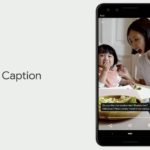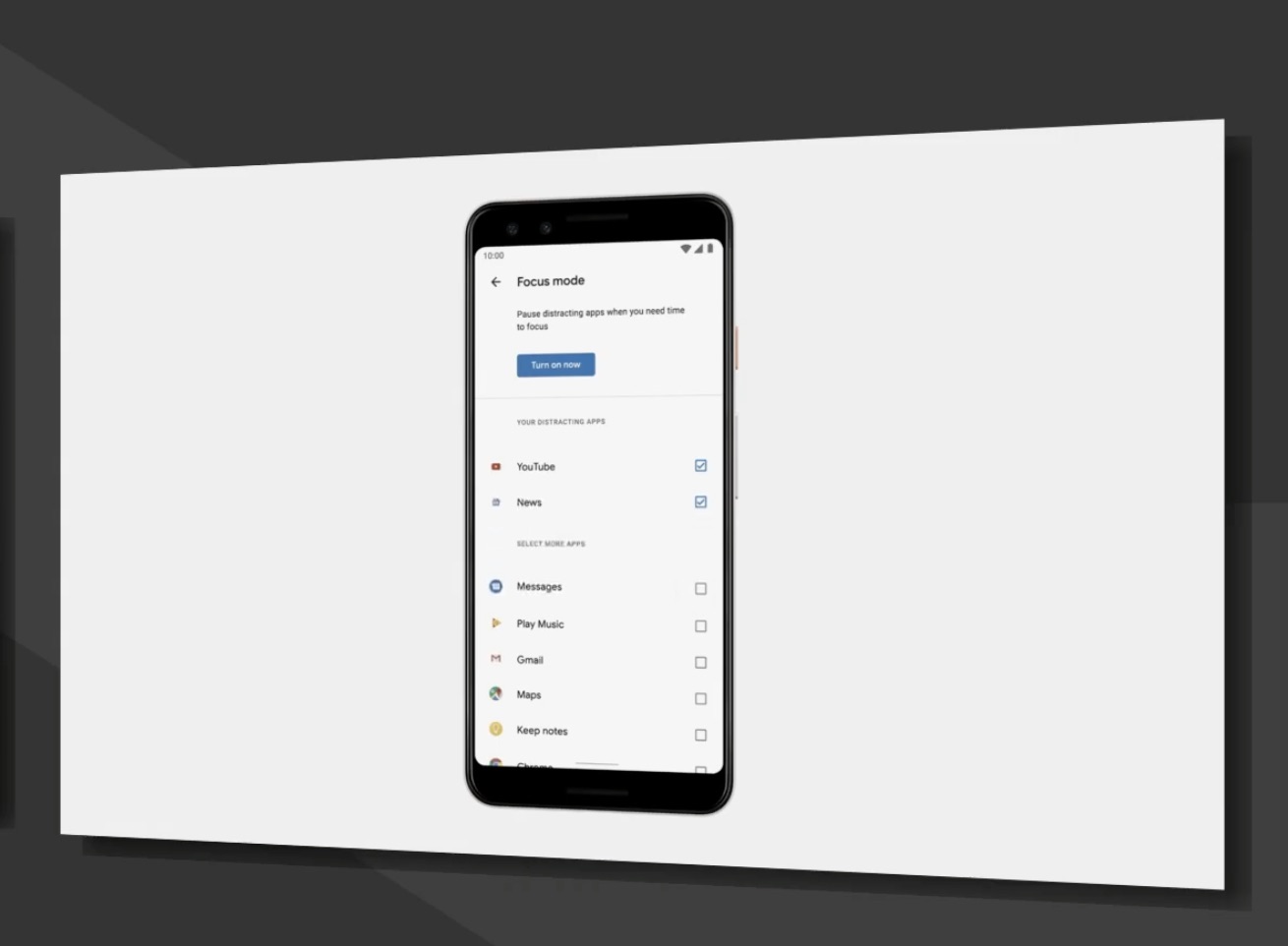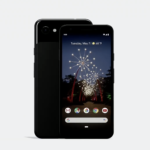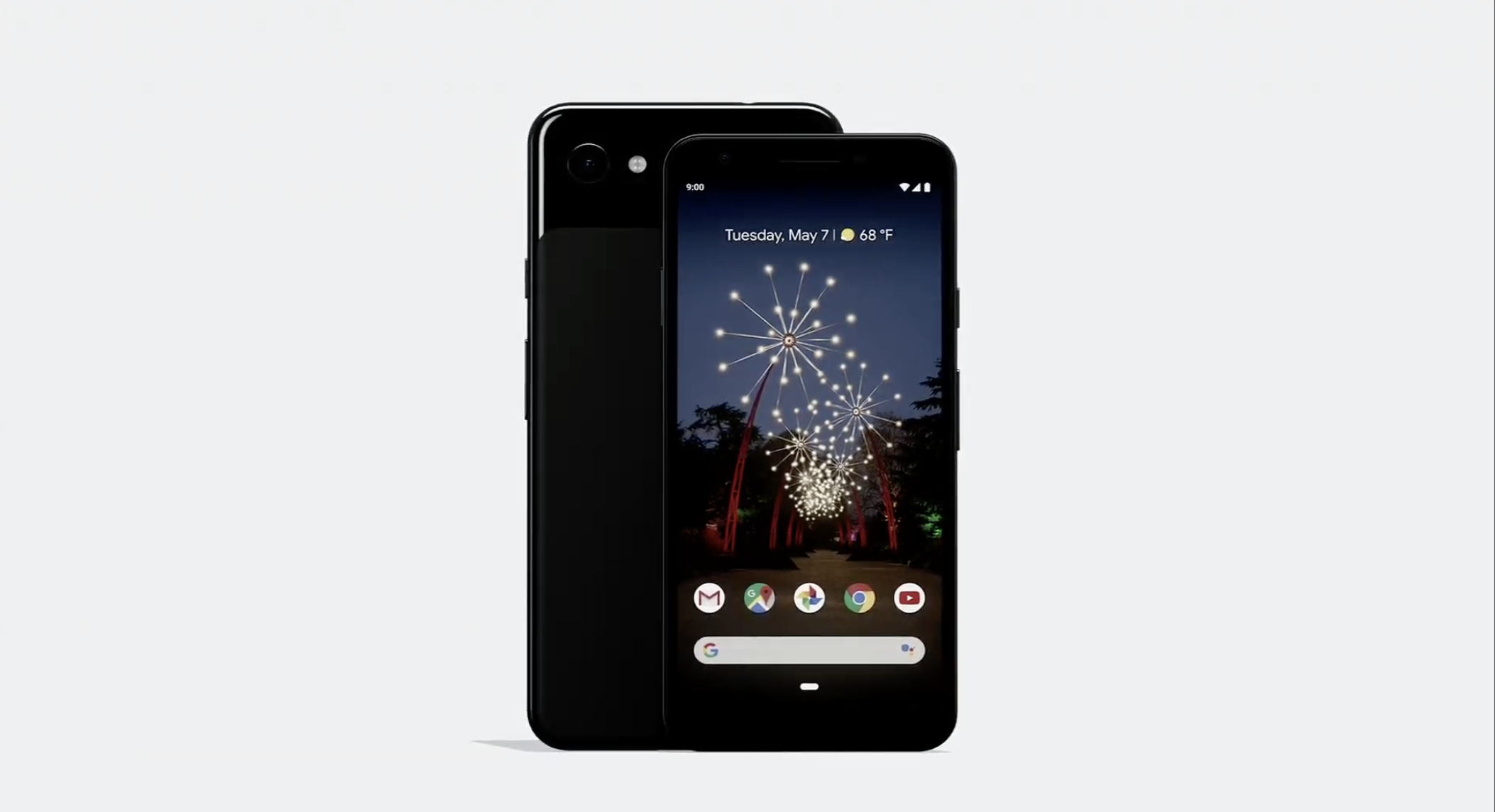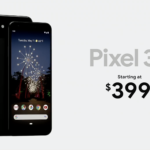Facebook talked privacy, Google actually built it
Mark Zuckerberg: “The future is private”. Sundar Pichai: ~The present is private~. While both CEO’s made protecting user data a central theme of their conference keynotes this month, Facebook’s product updates were mostly vague vaporware while Google’s were either ready to ship or ready to demo. The contrast highlights the divergence in strategy between the two tech giants.
For Facebook, privacy is a talking point meant to boost confidence in sharing, deter regulators, and repair its battered image. For Google, privacy is functional, going hand-in-hand with on-device data processing to make features faster and more widely accessible.
Everyone wants tech to be more private, but we must discern between promises and delivery. Like “mobile”, “on-demand”, “AI”, and “blockchain” before it, “privacy” can’t be taken at face value. We deserve improvements to the core of how our software and hardware work, not cosmetic add-ons and instantiations no one is asking for.
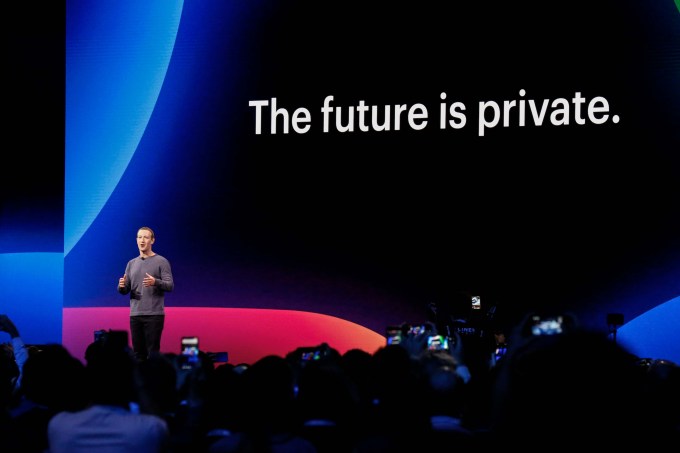
AMY OSBORNE/AFP/Getty Images
At Facebook’s F8 last week, we heard from Zuckerberg about how “Privacy gives us the freedom to be ourselves” and he reiterated how that would happen through ephemerality and secure data storage. He said Messenger and Instagram Direct will become encrypted…eventually…which Zuckerberg had already announced in January and detailed in March. We didn’t get the Clear History feature that Zuckerberg made the privacy centerpiece of his 2018 conference, or anything about the Data Transfer Project that’s been silent for the 10 months since it’s reveal.
What users did get was a clumsy joke from Zuckerberg about how “I get that a lot of people aren’t sure that we’re serious about this. I know that we don’t exactly have the strongest reputation on privacy right now to put it lightly. But I’m committed to doing this well.” No one laughed. At least he admitted that “It’s not going to happen overnight.”
But it shouldn’t have to. Facebook made its first massive privacy mistake in 2007 with Beacon, which quietly relayed your off-site ecommerce and web activity to your friends. It’s had 12 years, a deal with the FTC promising to improve, countless screwups and apologies, the democracy-shaking Cambridge Analytica scandal, and hours of being grilled by congress to get serious about the problem. That makes it clear that if “the future is private”, then the past wasn’t. Facebook is too late here to receive the benefit of the doubt.
At Google’s I/O, we saw demos from Pichai showing how “our work on privacy and security is never done. And we want to do more to stay ahead of constantly evolving user expectations.” Instead of waiting to fall so far behind that users demand more privacy, Google has been steadily working on it for the past decade since it introduced Chrome incognito mode. It’s changed directions away from using Gmail content to target ads and allowing any developer to request access to your email, though there are plenty of sins to atone for. Now when the company is hit with scandals, it’s typically over its frightening efficiency as with its cancelled Project Maven AI military tech, not its creepiness.
Google made more progress on privacy in low-key updates in the runup to I/O than Facebook did on stage. In the past month it launched the ability to use your Android device as a physical security key, and a new auto-delete feature rolling out in the coming weeks that erases your web and app activity after 3 or 18 months. Then in its keynote today, it published “privacy commitments” for Made By Google products like Nest detailing exactly how they use your data and your control over that. For example, the new Nest Home Max does all its Face Match processing on device so facial recognition data isn’t sent to Google. Failing to note there’s a microphone in its Nest security alarm did cause an uproar in February, but the company has already course-corrected

That concept of on-device processing is a hallmark of the new Android 10 Q operating system. Opening in beta to developers today, it comes with almost 50 new security and privacy features like TLS 1.3 support and Mac address randomization. Google Assistant will now be better protected, Pichai told a cheering crowd. “Further advances in deep learning have allowed us to combine and shrink the 100 gigabyte models down to half a gigabyte — small enough to bring it onto mobile devices.” This makes Assistant not only more private, but fast enough that it’s quicker to navigate your phone by voice than touch. Here, privacy and utility intertwine.
The result is that Google can listen to video chats and caption them for you in real-time, transcribe in-person conversations, or relay aloud your typed responses to a phone call without transmitting audio data to the cloud. That could be a huge help if you’re hearing or vision impaired, or just have your hands full. A lot of the new Assistant features coming to Google Pixel phones this year will even work in Airplane mode. Pichai says that “Gboard is already using federated learning to improve next word prediction, as well as emoji prediction across 10s of millions of devices” by using on-phone processing so only improvements to Google’s AI are sent to the company, not what you typed.

Google’s senior director of Android Stephanie Cuthbertson hammered the idea home, noting that “On device machine learning powers everything from these incredible breakthroughs like Live Captions to helpful everyday features like Smart Reply. And it does this with no user input ever leaving the phone, all of which protects user privacy.” Apple pioneered much of the on-device processing, and many Google features still rely on cloud computing, but it’s swiftly progressing.
When Google does make privacy announcements about things that aren’t about to ship, they’re significant and will be worth the wait. Chrome will implement anti-fingerprinting tech and change cookies to be more private so only the site that created them can use them. And Incognito Mode will soon come to the Google Maps and Search apps.

Pichai didn’t have to rely on grand proclamations, cringey jokes, or imaginary product changes to get his message across. Privacy isn’t just a means to an end for Google. It’s not a PR strategy. And it’s not some theoretical part of tomorrow like it is for Zuckerberg and Facebook. It’s now a natural part of building user-first technology…after 20 years of more cavalier attitudes towards data. That new approach is why the company dedicated to organizing the world’s information has been getting so little backlash lately.
With privacy, it’s all about show, don’t tell.
Powered by WPeMatico
Red Hat and Microsoft are cozying up some more with Azure Red Hat OpenShift
It won’t be long before Red Hat becomes part of IBM, the result of the $34 billion acquisition last year that is still making its way to completion. For now, Red Hat continues as a standalone company, and if to flex its independence muscles, it announced its second agreement in two days with Microsoft Azure, Redmond’s public cloud infrastructure offering. This one involves running Red Hat OpenShift on Azure.
OpenShift is Red Hat’s Kubernetes offering. The thinking is that you can start with OpenShift in your data center, then as you begin to shift to the cloud, you can move to Azure Red Hat OpenShift — such a catchy name — without any fuss, as you have the same management tools you have been using.
As Red Hat becomes part of IBM, it sees that it’s more important than ever to maintain its sense of autonomy in the eyes of developers and operations customers, as it holds its final customer conference as an independent company. Paul Cormier, Red Hat executive vice president and president of products and technologies certainly sees it that way. “I think [the partnership] is a testament to, even with moving to IBM at some point soon, that we are going to be separate and really keep our Switzerland status and give the same experience for developers and operators across anyone’s cloud,” he told TechCrunch.
It’s essential to see this announcement in the context of both IBM’s and Microsoft’s increasing focus on the hybrid cloud, and also in the continuing requirement for cloud companies to find ways to work together, even when it doesn’t always seem to make sense, because as Microsoft CEO Satya Nadella has said, customers will demand it. Red Hat has a big enterprise customer presence and so does Microsoft. If you put them together, it could be the beginning of a beautiful friendship.
Scott Guthrie, executive vice president for the cloud and AI group at Microsoft understands that. “Microsoft and Red Hat share a common goal of empowering enterprises to create a hybrid cloud environment that meets their current and future business needs. Azure Red Hat OpenShift combines the enterprise leadership of Azure with the power of Red Hat OpenShift to simplify container management on Kubernetes and help customers innovate on their cloud journeys,” he said in a statement.
This news comes on the heels of yesterday’s announcement, also involving Kubernetes. TechCrunch’s own Frederic Lardinois described it this way:
What’s most interesting here, however, is KEDA, a new open-source collaboration between Red Hat and Microsoft that helps developers deploy serverless, event-driven containers. Kubernetes-based event-driven autoscaling, or KEDA, as the tool is called, allows users to build their own event-driven applications on top of Kubernetes. KEDA handles the triggers to respond to events that happen in other services and scales workloads as needed.
Azure Red Hat OpenShift is available now on Azure. The companies are working on some other integrations too including Red Hat Enterprise Linux (RHEL) running on Azure and Red Hat Enterprise Linux 8 support in Microsoft SQL Server 2019.
Powered by WPeMatico
Keyword research in 2019: Modern tactics for growing targeted search traffic
Contributor
In 2019, it’s estimated that every minute there are 150 new websites coming online. While many of these won’t be long-term ventures, a large percentage will eventually find themselves looking to organic search engine traffic to grow their reach.
This invariably leads people to the task of keyword research; uncovering the search terms most likely to result in prospective customers.
With increased competition it’s imperative you don’t just focus on the traditional sources of keyword inspiration that every other business uses.
In the past year alone I’ve personally helped hundreds of business owners grow search engine traffic to their websites. This responsibility drives me to succeed in one key area: Finding relevant search terms to target that their competitors have likely missed.
In this article, I will highlight some of the most overlooked ideas and sources of data to reveal words and phrases relevant to your business that are high in intent but lacking in competition.
If you can find the keywords your audience are searching for, but your competitors haven’t found, you can leverage a huge advantage to increase traffic and engagement on your content.
Table of Contents
- Be Open to Talking About Your ‘Best’ Competition
- Use [Brand Alternatives] Search Terms to Gain Visibility
- Find Content Opportunities in the ‘People Also Ask’ Box
- Use Public Wikipedia Stats to See If a Term Is Worth Targeting
- Quora’s Ad Platform Reveals Popular Search Terms Without Spending a Penny
- Wikihow’s Public View Counts Are Great for Tutorial-Based Content Inspiration
- Bonus Tip: ProductHunt Dominate ‘Alternatives’ Keywords: Make Sure You Have a Listing There
- To Recap
1. Be Open to Talking About Your ‘Best’ Competition
Google is constantly improving their ability to understand searcher intent. That is, they know what people are looking for and the results that will satisfy those searches.
When it comes to any industry that offers products or services, one of the most common search queries is often some variation of “best [industry] [services / products]”.
Powered by WPeMatico
Live transcription and captioning in Android are a boon to the hearing-impaired
A set of new features for Android could alleviate some of the difficulties of living with hearing impairment and other conditions. Live transcription, captioning and relay use speech recognition and synthesis to make content on your phone more accessible — in real time.
Announced today at Google’s I/O event in a surprisingly long segment on accessibility, the features all rely on improved speech-to-text and text-to-speech algorithms, some of which now run on-device rather than sending audio to a data center to be decoded.
The first feature to be highlighted, live transcription, was already mentioned by Google. It’s a simple but very useful tool: open the app and the device will listen to its surroundings and simply display as text on the screen any speech it recognizes.
We’ve seen this in translator apps and devices, like the One Mini, and the meeting transcription highlighted yesterday at Microsoft Build. One would think that such a straightforward tool is long overdue, but, in fact, everyday circumstances like talking to a couple of friends at a cafe can be remarkably difficult for natural language systems trained on perfectly recorded single-speaker audio. Improving the system to the point where it can track multiple speakers and display accurate transcripts quickly has no doubt been a challenge.
 Another feature enabled by this improved speech recognition ability is live captioning, which essentially does the same thing as above, but for video. Now when you watch a YouTube video, listen to a voice message or even take a video call, you’ll be able to see what the person in it is saying, in real time.
Another feature enabled by this improved speech recognition ability is live captioning, which essentially does the same thing as above, but for video. Now when you watch a YouTube video, listen to a voice message or even take a video call, you’ll be able to see what the person in it is saying, in real time.
That should prove incredibly useful not just for the millions of people who can’t hear what’s being said, but also those who don’t speak the language well and could use text support, or anyone watching a show on mute when they’re supposed to be going to sleep, or any number of other circumstances where hearing and understanding speech just isn’t the best option.
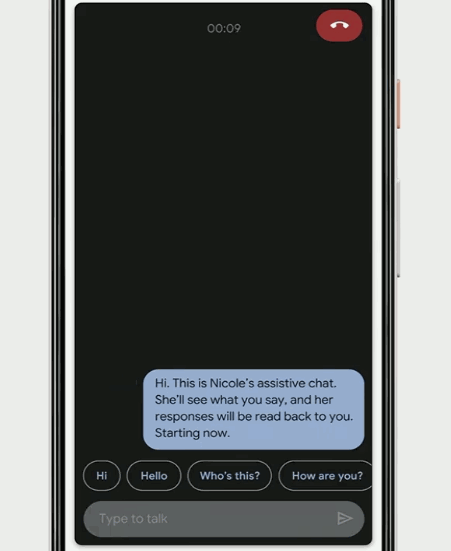 Captioning phone calls is something CEO Sundar Pichai said is still under development, but the “live relay” feature they demoed onstage showed how it might work. A person who is hearing-impaired or can’t speak will certainly find an ordinary phone call to be pretty worthless. But live relay turns the call immediately into text, and immediately turns text responses into speech the person on the line can hear.
Captioning phone calls is something CEO Sundar Pichai said is still under development, but the “live relay” feature they demoed onstage showed how it might work. A person who is hearing-impaired or can’t speak will certainly find an ordinary phone call to be pretty worthless. But live relay turns the call immediately into text, and immediately turns text responses into speech the person on the line can hear.
Live captioning should be available on Android Q when it releases, with some device restrictions. Live transcribe is available now, but a warning states that it is currently in development. Live relay is yet to come, but showing it onstage in such a complete form suggests it won’t be long before it appears.
Powered by WPeMatico
Google expands digital well-being tools to include a new ‘Focus mode,’ adds improved parental controls to Android
Last year at Google I/O, Google introduced a host of new digital well-being tools aimed at helping people better manage their screen time, track app usage and configure their device’s “do not disturb” settings. Today, Google is updating its suite of tools to include a new feature called “Focus Mode” that lets you temporarily disable distracting apps while not missing critical information, as well as a few new features for users of its parental control software, Family Link, which is now part of the Android OS.
With Focus Mode, a new feature for Android devices, you can turn off the apps you personally find distracting while you’re trying to sit down and get things done. For example, you could disable updates from distracting social media apps or email, but could choose to leave texting on so family members could reach you in an emergency.
Though not mentioned during the announcement, the feature also could help people enjoy their devices in their downtime — like streaming from Netflix without getting bothered by Slack notifications and work email. That’s not necessarily a way to reduce screen time — which is what a lot of today’s digital well-being features provide. Instead, it’s about finding balance between when it’s time to work and when it’s not, and what things deserve our attention at a given time.
Also unveiled today at Google I/O were new features for Family Link, Google’s software that lets parents control what kids can do on their devices, and track their usage.
Now, parents can set time limits on specific apps instead of just “screen time” in general. This is similar in a way to what Amazon’s FreeTime parental controls offer, as they allow parents to require that kids finish their reading before they can play games, for example. In Google’s case, it’s instead allowing parents to limit certain apps they believe are distractions to children.
Another new feature will allow parents to give kids extra screen time, or “bonus time.”
This could help kids who need just a few more minutes to wrap up what they’re doing on their device, or could be doled out as a reward, depending on how parents wanted to use the feature.
The company also announced it’s making Family Link part of every Android device, beginning with Android Q. That means Family Link will become accessible from device settings, instead of being an optional app parents can choose to download. You’ll find it under the “digital well-being and parental controls” in Android Q devices rolling out later this summer, says Google.
“We’re spending a lot of time on phones, and people tell us, sometimes they wish they spent more time on other things. We want to help people find balance and digital well-being. And yes, sometimes this means making it easier to put your device away entirely, and focus on the times that really matter,” said Stephanie Cuthbertson, senior director for Android.
She said these tools were already proving useful, as 90% of app timers helped users stick to their goals and there was a 27% drop in nightly usage thanks to Wind Down. However, the company didn’t share how many users were taking advantage of the digital well-being features as a whole.
Powered by WPeMatico
Google’s Pixel 3 and 3a are coming to more carriers, including Sprint and T-Mobile
If you’re going to go carrier-exclusive, Verizon (Disclosure: our parent company’s parent company) is probably about as good as any. Ultimately, however, exclusives invariably do more harm than good when it comes to growing your footprint.
That’s no doubt a key part of why Google had a rocky financial quarter when it came to the Pixel line. Exclusivity coupled with all the other headwinds currently facing the smartphone industry spelled bad news for the reliable line. Thankfully, however, that’s starting to change with today’s arrival of the Pixel 3a.
The budget handset, along with its flagship brethren, are about to be available on a lot more carriers. Google’s keeping Verizon around and adding T-Mobile, Sprint, US Cellular, Spectrum Mobile (Charter) and C Spire. The devices will be available online through those carriers starting today, and will be hitting shelves tomorrow.
That means a heck of a lot more retail display space and ad dollars will be pumped into the product, which should help give the new handset and its six-month-old predecessor a nice little bump ahead of Google’s Q2 reports.
AT&T is notably the odd one out here. While the devices will support the carrier, they won’t be available through its retail channels — nor will they be available through contract. That certainly makes a difference here in the States, where contracts are still king.
Powered by WPeMatico
The headphone jack is back for the Google Pixel 3a
Hello old friend. I knew you would be back. I didn’t know how or when, but I knew we would be reunited again. It turns out all it would take was a cratering smartphone market to bring you back around.
Google, of course, famously stood its ground on the importance of the 3.5 mm for the first Pixel, only to drop it a generation later. Now that the company’s got a budget offering in the form of the Pixel 3a, it’s returned to the nurturing arms of the hardwired headphone.
The move makes financial sense. Hardware manufacturers have been a bit more hesitant to drop the technology of budget and mid-tier devices, due to the added cost of asking users to upgrade to either Bluetooth headphones or USB-C models.
Curiously, however, the 3a won’t actually ship with its own headphones. According to Google, “Since Pixel 3a has compatibility with 3.5mm analog audio, USB-C digital audio and wireless Bluetooth 5.0, we feel like this gives users the flexibility to choose the headphones that are best suited to their individual needs.”
I mean, sure. But let’s be real, this likely had a lot more to do with manufacturing margins on the devices. Given how cheap these sorts of default headphones likely are to produce, however, it would have been a nice gesture to toss them in for users.
Powered by WPeMatico
Google’s budget Pixel 3a starts at $399, available in ‘purple-ish’
Last week’s earnings didn’t go the way Alphabet wanted. The fault primarily lies at the feet of the company’s ad business, but the hardware side didn’t come out great, either. Like the rest of the industry, Google’s been struggling to sell smartphones. Sundar Pichai cited “year over year headwinds” in reference to Pixel 3 sales figures.
He did, however, hint at good things to come. Selling the future is an important part of a CEO’s job, of course, but there are reasons to be hopeful. There are interesting innovations on the way, like 5G and foldables, and, in Google’s case, there are other things in the works. Pichai alluded to both a new Taipei R&D campus and, in the much shorter term, hardware announcements planned for Google I/O.
It was clear to all listening that the exec was referring to the Pixel 3a with the latter bit. Like the Pixel 3 before it, the phone had leaked out all over the place in the preceding months and weeks. By late last week, it was showing up at Best Buys in Ohio.
Like the aforementioned Taipei campus, the device is very much the product of Google’s massive investment in HTC’s R&D team. Tired of outsourcing design, the company simply went ahead and picked up an existing property. The deal made sense from Google’s perspective — HTC knows how to make phones, even if it’s forgotten how to actually sell them.
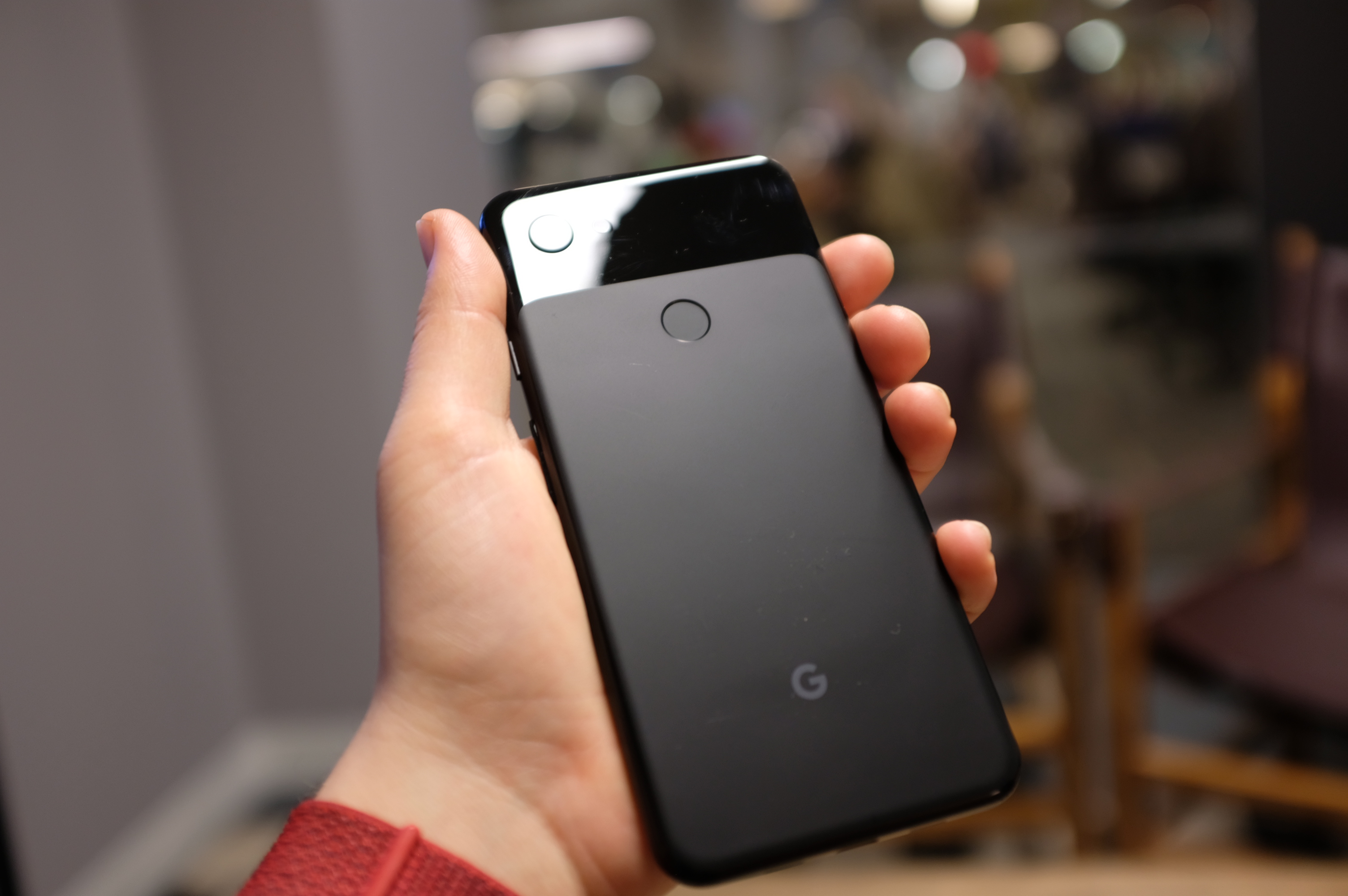
Another thing the Taipei team brought to the table was the ability to build a phone on a budget. It’s something that could ultimately prove a saving grace for the Pixel team as Google and the industry at large grapple with those “headwinds” of stagnant global economies and slowed upgrade cycles. What makes the 3a a particularly compelling product, however, is how it fits in with Google’s long-stated plan of innovating more on the software/AI/ML fronts.
From the sound of the company’s past rhetoric, hardware is becoming increasingly irrelevant to the topic of smartphone advances, and this $399 handset is a good place to prove that out.
“The smartphone market has started to flatten,” Google VP of Product Management Mario Queiroz told TechCrunch ahead of launch. “We think one of the reasons is because, you know, the premium segment of the market is a very large segment, but premium phones have gotten more and more expensive, you know, three, four years ago, you could buy a premium phone for $500.”
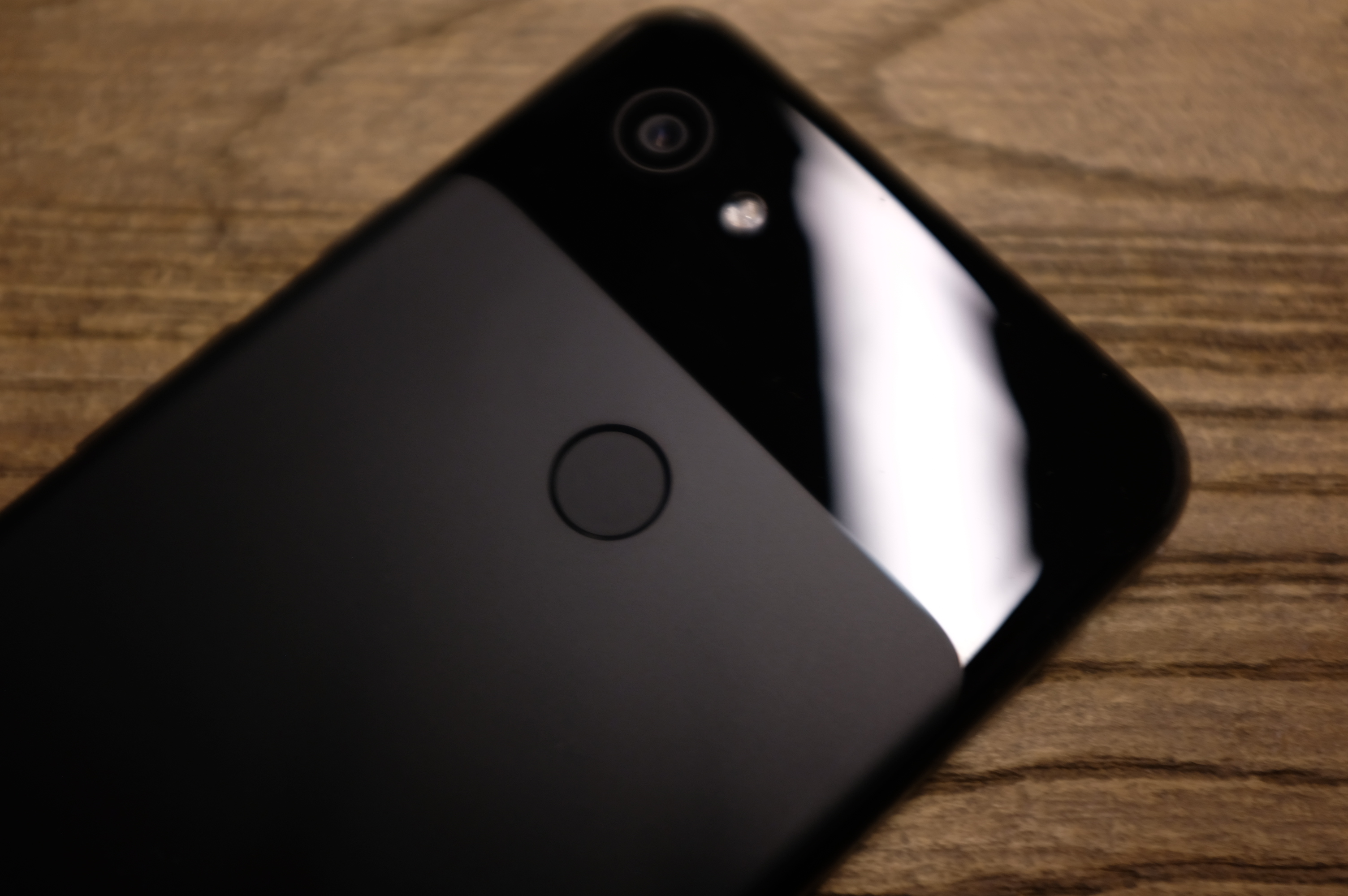
The Pixel 3a cuts some hardware corners, compared to its flagship brethren, but manages the feat of coming in at $399 for the standard version and $479 for the XL — those sport 5.6 and 6.0 OLEDs, respectively. The design looks remarkably similar to the Pixel 3, though the glass and metal materials have been swapped out for a cheaper polycarbonate unibody design.
The biggest change internally is the switch from last year’s cutting edge Snapdragon 845 to a much more middling 640. That won’t make a huge difference for most daily tasks, but you may well notice an impact on more resource-intensive tasks like gaming.
I’ve been using the XL for a couple of days now (albeit laid up in bed with the stomach flu for a few of them), and have found it to be a pretty reliable mid-tier device, coupled with some of the standard Pixel features like Active Edge — not to mention the shocking return of the headphone jack. I’ll report back when I’ve been able to play with it a bit longer, to see whether Google’s promise of hardware agnosticism can really excel here.
Google does seem to have a lot of hope riding on this one, along with what looks to be a shift to a half-year phone release cycle (flagship in fall, budget in spring). The company is competing with a lot of budget smartphone makers, including one-time subsidiary Motorola and countless manufacturers in China. The appeal of a cheaper Pixel is apparent, but this isn’t a device that screams excitement, Purple-ish color aside.
That said, Google finally opening the device to additional U.S. carriers beyond Verizon should certainly help. The 3a will be available online starting today, with in-store availability starting tomorrow.
Powered by WPeMatico
Next-generation Google Assistant is coming to new Pixel phones this year
A next-generation Google Assistant that can handle more complex tasks across apps — quickly switching from hailing a ride, to checking the weather, to taking a selfie — is coming to new Pixel phones later this year.
An early demonstration of the more robust Google Assistant was shown Tuesday at Google I/O 2019, the company’s annual developer conference.
A key feature is that users will no longer have to exclaim “Hey Google” for every question or task. Instead, a user can make a variety of requests after the initial “Hey Google” wake command.
During the demo, a Google employee onstage was able to use the voice assistant to craft a text message, quickly search photos of a trip, filter further to find animal photos, then add the image and send the message. In a subsequent task, the user verbally asked for flight information, added to the text and sent.
The next-gen Google Assistant will be able to compose and send emails, as well.
Powered by WPeMatico
As concerns over medical device security rise, MedCrypt raises $5.3 million
As medical devices move to networked technologies, securing those devices becomes increasingly important.
Regulators, seemingly late to the threat that unsecured medical devices posed, only began requiring protections for medical devices like pacemakers and insulin pumps two years ago, and since then new technology companies have leapt into the breach to begin providing security services for the healthcare industry.
Most recently, MedCrypt, a graduate from the most recent batch of Y Combinator companies, raised $5.3 million in a new round of funding, from investors led by Section 32, the investment firm founded by former Google Ventures partner Bill Maris.
Joining Maris’ firm were previous investors Eniac Ventures and Y Combinator itself.
“Internet-connected medical technology is entering the market at light speed, calling for devices to be secure by design, which leads to a heightened level of patient safety at all times,” said MedCrypt chief executive Mike Kijewski in a statement.
Securing patient data has been a longtime requirement for health technology companies, but both patient records and hospital networks are dangerously vulnerable to cyberattacks.
In 2018, more than 6 million patient records in the U.S. were exposed thanks to network intrusions and cyberattacks, according to the publication Health IT Security. And those were just in the 10 largest security breaches.
The healthcare industry has only managed to achieve 72% compliance with the HIPAA Security Rule for protecting patient data, according to an April report from CynergisTek.
Investors have recognized the problem and are investing more into companies focused on the healthcare market specifically. MedCrypt’s competition for these security dollars include companies like Medigate, which raised $15 million earlier this year.
While Medigate focuses on network security, MedCrypt is focused on securing devices themselves. Both security functions are critical, according to investors.
“With regulators appropriately taking a hard look at medical device security and the sheer growth in the number of devices being added to already complex clinical networks,” there is a significant opportunity for companies tackling medical device security, according to a statement from Dr. Jonathan Root, who has led several IT-enabled healthcare investments for USVP.
Powered by WPeMatico

